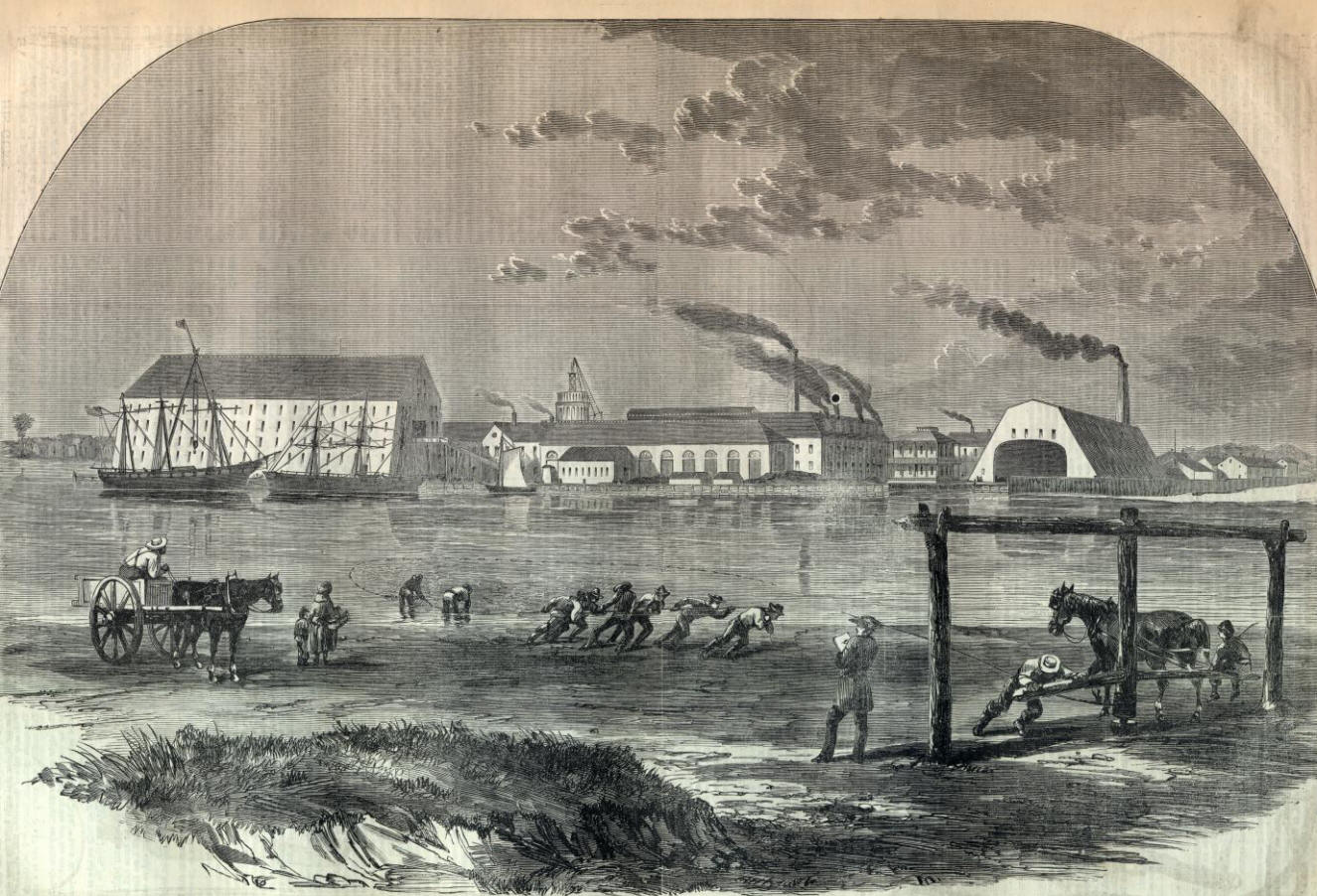

Thus began a shift to what was to be the character of the Yard for more than a century: ordnance and technology. In May 1815, the Board of Naval Commissioners decided it was a disadvantage to have the Yard as a base and recommended it be limited to shipbuilding. After the fire, looting by the local populace took its toll and Commodore Tingey recommended that the height of the eastern wall be increased to ten feet. Only the Latrobe gate, Tingey’s own quarters, adjoining offices, the barracks, and the small schooner Lynx escaped the fire.

All the stores that could not be evacuated, the unfinished Columbia and Argus, and most of the Yard’s buildings were consumed in the flames. It became clear the Washington Navy Yard could not be defended and Captain Thomas Tingey, the Yard’s Commandant, with the concurrence of the president and the secretary of the Navy, ordered the Yard burned. Ten days later they brushed aside a hastily gathered American force at Bladensburg and marched into Washington. On August 14, 1814, the British, under Admiral Sir George Cockburn and Major General Robert Ross, landed at Marlboro on the Patuxent River. The War of 1812 found the Navy Yard a vital strategic link in the defense of the young capital city. In 1812, the USS Constitution came to the Yard to refit and prepare for combat action. Twenty-two vessels were constructed on the Yard, ranging from small 70-foot gunboats to the Minnesota, a 246-foot steam frigate.

The original boundaries that were established in 1800, along 9th and M Streets SE, are still marked by a white brick wall, built in 1809, along with a guardhouse.ĭuring its early years, the Navy Yard became the Navy’s largest shipbuilding and shipfitting facility. It occupies land set aside by George Washington for use by the Federal Government along the Anacostia River. The Washington Navy Yard, authorized by the first Secretary of the Navy, Benjamin Stoddert, in 1799, is the U.S.


 0 kommentar(er)
0 kommentar(er)
